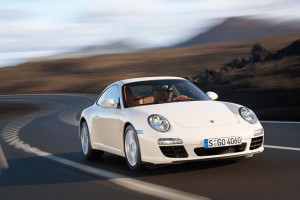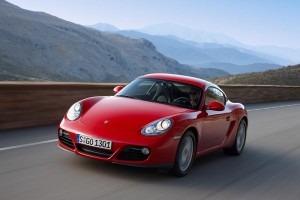Stuttgart – Oct. 27, 2010 – Dr. Ing. h.c. F. Porsche AG, Stuttgart, continues to consistently target fuel economy with each model change. Depending on the model, the savings achieved by all currently available model series in comparison with the corresponding predecessors lie in the double-digit percentage range whilst simultaneously offering significantly increased performance. With consumption reductions of 20 to 23 percent in the New European Driving Cycle (NEDC), the savings achieved by the new generation of Cayenne models are the highest. However, the new generations of the 911 and Boxster/Cayman sports car model series launched in 2008 also revealed savings of up to 16 and 15 percent respectively.

 In the sports cars with naturally aspirated engines, the vast majority of these reductions, 0.5 and 0.6 l/100 km respectively, is attributable to the switch to direct fuel injection and the introduction of the seven-speed Porsche Doppelkupplungsgetriebe (PDK) instead of the five-speed automatic torque converter transmission Tiptronic S. These measures also enabled a 911 vehicle to dip beneath the mark of ten litres of fuel per 100 kilometres for the first time: the 345 hp 911 Carrera with PDK consumes just 9.8 l/100 km. In comparison with the predecessor model, this equates to 13 percent less fuel consumption and 15 percent lower CO2 emissions. The Boxster and Cayman models are also benefiting from the new drivetrain technology. Direct fuel injection and PDK allow fuel consumption in both the 310 hp Boxster S and the 320 hp Cayman S to be reduced by 15 percent to 9.4 l/100 km.
In the sports cars with naturally aspirated engines, the vast majority of these reductions, 0.5 and 0.6 l/100 km respectively, is attributable to the switch to direct fuel injection and the introduction of the seven-speed Porsche Doppelkupplungsgetriebe (PDK) instead of the five-speed automatic torque converter transmission Tiptronic S. These measures also enabled a 911 vehicle to dip beneath the mark of ten litres of fuel per 100 kilometres for the first time: the 345 hp 911 Carrera with PDK consumes just 9.8 l/100 km. In comparison with the predecessor model, this equates to 13 percent less fuel consumption and 15 percent lower CO2 emissions. The Boxster and Cayman models are also benefiting from the new drivetrain technology. Direct fuel injection and PDK allow fuel consumption in both the 310 hp Boxster S and the 320 hp Cayman S to be reduced by 15 percent to 9.4 l/100 km.
More power with lower consumption, increased efficiency and reduced CO2 emissions – this basic principle of the “Porsche Intelligent Performance” programme also particularly applies to the new Cayenne model series. The two six-cylinder Cayenne and Cayenne Diesel models therefore consume 20 percent less fuel than their predecessors, whilst fuel consumption in the two V8 Cayenne Turbo and Cayenne S models has actually been reduced by 23 percent. The new highlight within the model series – the Cayenne S Hybrid – offers the greatest fuel economy: it consumes just 8.2 l/100 km. If the Cayenne S Hybrid, with its total power output of 380 hp, is compared against the 385 hp Cayenne S from the previous generation, the reduction is actually 40 percent with better performance in certain disciplines. Three out of five Cayenne models remain beneath the mark of ten litres of fuel per 100 kilometres in the NEDC, with two offering CO2 emissions of less than 200 g/km.
Amongst other measures, this significant reduction in consumption across the entire Cayenne range has been attained via the introduction of the new eight-speed automatic transmission Tiptronic S with automatic stop/start function and a wide gear ratio range, due to thermal management for the engine and transmission cooling circuit, by vehicle electrical system recuperation and variable deceleration fuel cutoff and, by no means least, due to weight reduction and intelligent lightweight construction. A weight-optimised material mix and modifications to the overall vehicle concept such as the new active and light four-wheel drive system have enabled the weight of the Cayenne Turbo, for instance, to be reduced by 185 kilograms despite improved product substance and increased safety. This not only impacts extremely positively on consumption and CO2 emissions but also on performance, agility and handling.



